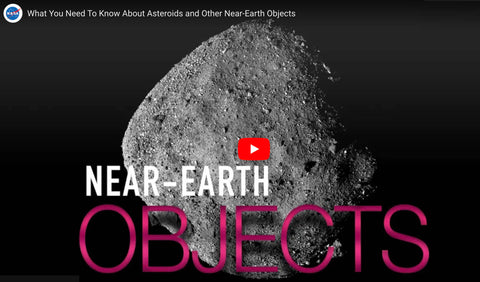NASA's Asteroid Mission - DART (Double Asteroid Redirection Test)
Have you heard of NASA’s recent mission to crash into an asteroid? Called the DART Mission (Double Asteroid Redirection Test), it is part of a larger NASA initiative called Planetary Defense, which has the goal of protecting the Earth from Near Earth Objects. Near Earth Objects (NEO’s for short) are space objects like asteroids and comets that pass within 30 million miles of the Earth’s orbit. Click on the image below to watch an entertainig video about NEOs:
NASA setup the Planetary Defense Coordination Office to detect, identify and track these NEO’s, working with partners around the globe. They develop methods for dealing with NEO’s that may come too close to Earth in the future.
One method to deal with a NEO (Near Earth Object) that comes TOO CLOSE to Earth is to change its orbit by knocking it off-course. The DART Mission was the very first test of this method! The asteroid was not an actual threat, so this mission was a practice run.
DART used a spacecraft specially-designed for this mission. The DART Mission targeted 2 asteroids orbiting 6 million miles from Earth! The smaller asteroid, Dimorphos, is only 120 meters across. It circles around the larger asteroid, called Didymos.
The spacecraft aimed to crash into the smaller asteroid, a very small target in space! Click here to visit the NASA Planetary Defense website for more info!
On September 26, 2022, the DART spacecraft successfully crashed into the Dimorphos asteroid. Recent data from the mission indicates that it did actually change the orbit of the asteroid Dimorphos, even more than expected! Read more details in Science News.
This NASA mission is one of the topics discussed in the Particle Physics & Science Club! We also learn about the lab and scientists involved in the project. The Particle Physics & Science Club is offered on Mondays 4-4:50pm and Fridays 12-12:50pm. As a weekly ongoing course, students may join and leave the club at any time, exploring physics and science topics in a flexible format.
We look forward to sharing more physics & science news with you!

 My Account
My Account


